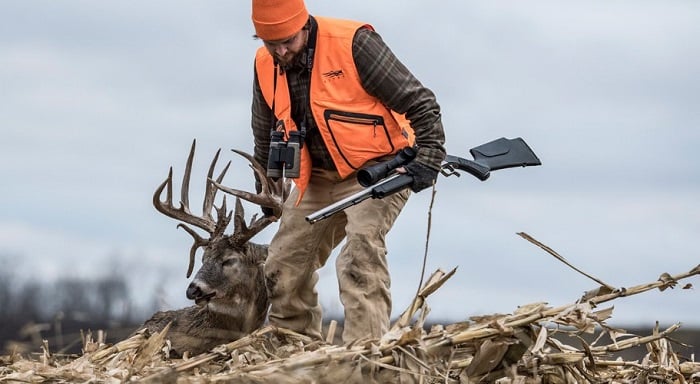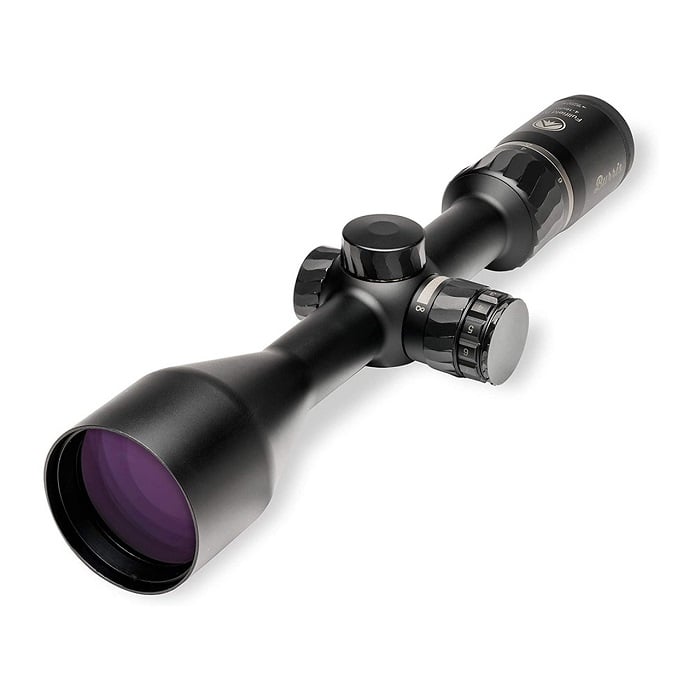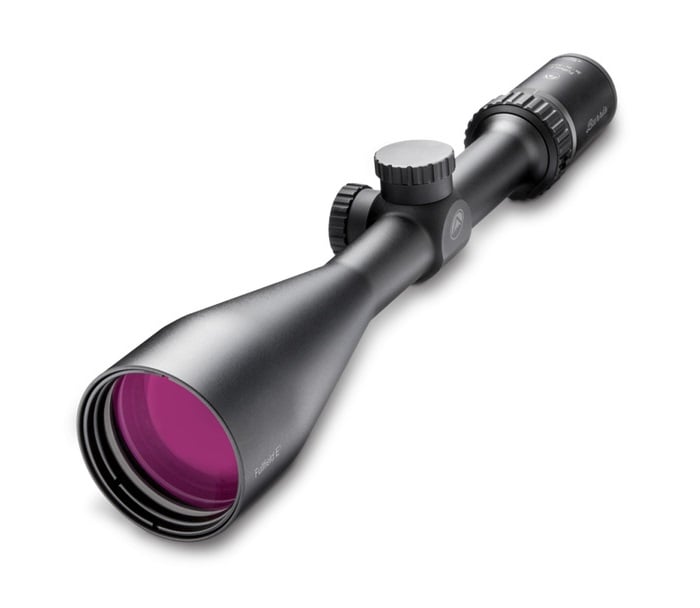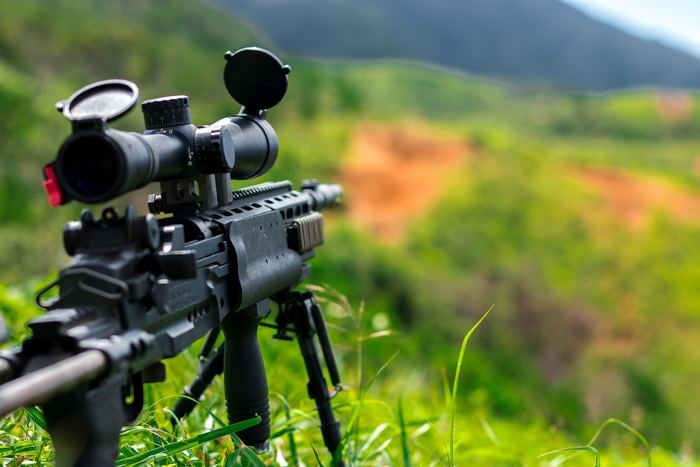
Once you set off on a hunt, your equipment becomes your closest companion. You depend on it as much as you depend on your skills, the environment, and sometimes, fate. If the last two are out of your control, you can still make sure that your gear is reliable and your skills are as sharp as ever. We leave the skills honing part to you, and you leave the equipment quality control to us.
In this boundless sea that the modern market is, it might be hard to tell the difference between hundreds of similar items. Scopes are no exception, for there are dozens of brands claiming to make the best optics available. Hardly there are so many best items out there, but this is the world of advertising, and words are not always supported by anything tangible. There are, however, brands that have proved themselves worthy. Burris is one such brand.
For almost fifty years Burris has been producing quality optics and managed to carve out a niche for itself. The renowned Fullfield series marked the beginning of the new era for the company and remains their most popular line of scopes to this day. If it were just another regular series, no recognition would come to it. But Burris Fullfield are no mundane scopes. What makes this series competitive with other brands’ signature optics? We will break down the characteristics of Fullfield scopes to find out.
First things first, Fulfilled series include no less than three types of scopes: Fulfilled II, Fullfield IV, and Fullfield E1. They all share some common characteristics but are, naturally, not the same. We will elaborate on what brings these scopes together and what differentiates them.
Table of Contents
Main Features of the Burris Fullfield Riflescopes
Every member of the Fullfield family can boast a high versatility in terms of application: they are all suitable for hunting different types of animals: varmint, waterfowl, or big game. Easy configuration and adjustment make Fullfield scopes a reliable choice for target shooting.
Burris Fullfield Scopes come in a wide range of prices. They are relatively more affordable than the majority of famous brands’ scopes. But don’t get the wrong message since they never trade prices for quality.
Fulfilled series representatives are pretty lightweight, adding only about 13-15 ounces to your rifle. Naturally, scopes with bigger lenses will be heavier, as enhanced image sharpness and brightness never come without a price. For example, Burris Fullfield IV 4-16x50mm Illuminated Ballistic E3 Matte Riflescope weighs as much as 21.6oz but offers more windage and elevation adjustment than the rest of its relatives.

Burris has set some standards followed by all the major manufacturers in the industry. One of those standards is lens coating. Burris was the first to introduce multi-coated lenses endowed with more precise light transmission and more reliable protection against glare. Today all Burris lenses are covered with index-matched Hi-Lume multicoating that boosts the scope’s performance in low-light conditions and eliminates hampering glare.
Fulfilled scopes’ outer tubes are durable and stress-free, which allows them to resist shock and vibration caused by heavy recoil. That makes them a good option for big-caliber firearms.
Now that we have outlined all the typical features, it’s time to go into details of Burris Fullfield riflescopes.
Magnification Power
Fullfield E1 and Fulfilled II share the same range of magnification power options. Each of them is more beneficial in different situations. These options include:
- 3-9x
- 4.5-14x
- 6.5-20x
As you can see, all of the Burris Fullfield scopes have a variable magnification range so that you can adjust the zoom according to your situational needs.
The 3-9x remains the most popular choice and is considered a traditional configuration that many hunters came to like. It offers a good field of view while providing enough magnification for hunting and target shooting. The eye relief in such scopes ranges between 3.1 and 3.4 inches.
Burris Fullfield 3-9x50mm 1in Riflescope with Ballistic Plex E1 Reticle is an emblematic example of what constitutes a quality 3-9x riflescope. Elevation and windage can be finely adjusted within a 50-MOA range with the help of 1/4 MOA clicks.

The 4.5-14x is the middle ground between a wide field of view of 3-9x and an increased magnification of 6.5-20x. In Fullfield E1 and Fulfilled II scope FOV drops from 33 to 22 feet on the lowest magnification while the highest margin of the eye relief shifts to 3.8 inches. Windage and elevation adjustments are limited to 40 MOA.
The 6.5-20x scopes possess the ultimate magnification shared by these two progenies of the Fullfield series, though not the biggest among all Burris scopes. These devices are also installed with 50mm lenses that significantly improve the image and light transmission quality. Down go the field of view, as it usually does with higher magnification and elevation/ windage adjustments range.
Burris Fullfield IV is something of a black sheep among its siblings. These scopes have their own sets of magnification ranges, not shared by any other type. Objective lens diameter is also subject to constant changes. For example, 3-12x scopes can come with 42mm or 56mm lenses. Fullfield IV includes a more varied collection of scopes that are still worthy of your attention.
Reticle Types
Each subcategory of the Fullfield scopes has a set number of reticle types. Usually, each model has no more than two reticle types, but here our dear Fullfield IV stands out once again.
Fullfield E1 Reticle Types include:
- Ballistic Plex
- Ballistic Plex E1
- Ballistic Plex E1 MV
- Long-Range MOA
Ballistic Plex has the simplest yet the most effective design. It allows for trajectory compensation out to 500 yards and can be matched with any caliber and bullet weight.
Ballistic Plex E1 reticle helps you address long-distance shooting challenges: determining holdover and hold-off. Cascading dots assist you in making adjustments to compensate for wind deflection and gravity, while hash marks on the lower vertical crosshair make a dead-in aiming easier.
Ballistic Plex E1 MV is designed for long-range shooting and is exclusive to a 6.5-20x50mm scope. Trajectory compensation range is increased to 700 yards, while integrated mil measuring tools help calculate the distance to your target.
Long-Range MOA reticle is, unsurprisingly, beneficial to long-range shooters. The MOA-based design increases the speed and precision of hold-off and holdover adjustments without cluttering your vision.
Fulfilled II reticles feature one of the already mentioned and bring two new ones:
- Plex
- Ballistic Plex
- Ballistic Mil-dot
Plex reticle sounds less complicated and features a simple design. It has thin crosshairs with bolded edges that help you focus on animals of nearly every size.
Ballistic Mil-dot reticle is another long-range shooter assistant. The same 700 yards that Ballistic Plex E1 MV has, combined with traditional mil dots make for easy range estimation and wind drift adjustment.
Fullfield IV can boast the highest number of reticles available, eight. We’ve covered half of those already, and 3 of them are exclusive for their corresponding scopes, but one reticle is used more frequently. Ballistic E3 is calibrated specifically for traditional, magnum, and varmint loads. Once crosshairs are zeroed at 100 yards, each line of the lower vertical crosshair will be calibrated for 200, 300, and 400 yards respectively.
Objective Lens Diameter and FOV
Lens quality is a characteristic that will define the scope’s performance, so if we were to choose only one piece that by no means can be scrimped on, that would be lenses. Burris Fullfield series feature lenses with a diameter from 40mm to 50mm, with only one model reaching the 56mm mark. Usually, bigger lenses are reserved for scopes with a higher magnification power. For example, Burris FullField II 6.5-20x50mm 1in Riflescope with Ballistic Mil-Dot Reticle is installed with a 50mm lens, while its younger relative 3-9x40mm scope enjoys a 40mm lens. But just like in real life, it’s not always about size. Not only about it, at least. The glass quality is as important, if not more, as the lens diameter. No diameter can compensate for poor-quality material. Luckily, all Burris lenses are produced from high-grade optical glass that provides excellent color fidelity and image brightness.
The field of view is an area you can see through your scope. It is determined by two factors: objective lens diameter and magnification power. The dependence is as follows: bigger lens diameter and lower magnification are attributes of a larger field of view; smaller lenses and higher magnification power lead to a limited field of view. FOV is a variable figure, where the lower margin shows your field of view at minimum magnification, whereas the second number indicates how wide your FOV is at maximum zoom. For example, a 3-9x scope with a 40mm lens has a starting FOV of 33 ft. A 6.5-20x50mm scope, even though its lens diameter is 10mm bigger, will have a lower margin of 18 ft because its starting magnification is twice as high. The Burris Fullfield IV 3-12x56mm riflescope wins the FOV competition with a result of 40 ft since it has the biggest lens and a low starting magnification. Knowing this will help you choose a scope with a comfortable field of view and not blindly follow the rule ‘the bigger objective lens, the better.’
Anti-Fogging Tubes
Every glasses possessor knows how terrible and inconvenient (to say the least) fogging is. Scope lenses are prone to the same malady. If it is still possible to wipe glasses from both sides, there is only one easily accessible side of the scope. To prevent internal fogging, scope tubes get filled with nitrogen that prevents moisture from forming inside the scope. That becomes especially relevant in wet and cold weather. To further enhance scopes’ resistance against the elements, tubes are made waterproof so that no moisture may find its way into the interior of the scope.
Elevation and Windage Adjustment Turrets
Sometimes, we need to adjust the scope either vertically or horizontally. That is called elevation and windage adjustment, and it is usually conducted by hand or through turret-style knobs. Scopes with lower magnification power have a higher adjustment capability: 3-9x have 50 MOA (minute of angle), 4.5-1x 0 40 MOA, and 6.5-20x – 30 MOA. Click value of 1/4 MOA allows for precise adjusting.

What Are The Differences Between Burris Fullfield Scopes?
Now that we’ve highlighted things that unite Fulfilled family members, it’s time to take a look at their differences. To begin with, are there any? Sure thing, we already know that Fullfield IV scopes are somewhat different from their siblings according to several features. They have their own magnification range figures, more varied combinations of magnification power and lens diameters, and they also tend to be heavier. Fullfield E1, being the latest generation of scopes, enjoys several advanced features that make them stand out. The double internal spring-tension system is one such feature. It helps the scope to remain zeroed even after heavy recoil and unaffected by consequential shock and vibrations. E1 features a separate power ring and eyepiece, allowing for alleviated magnification adjustment. Elevation and windage turrets indications reflect the change in point of impact to improve your decision-making concerning further adjustments. The Fulfilled II series is something of a middle ground: it comprises all the best features of the series but has nothing extraordinary about it. Except for being extremely good, that is.
Now we can finally answer the initial question: are Burris Fullfield scopes any good? You bet they are! The Fulfilled series has earned its place among the best scope for the money. Most of them are not top-echelon, so you won’t need to pay four-figure sums for them, but this doesn’t mean they are just a ‘will do’ variant. In our Burris Fulfield review, we’ve covered all their major advantages, so now you can form your own opinion on how good they are. Words are great and everything, but nothing can compare to a first-hand experience. With that, Gritr Sports can help you again. We have many Burris scopes that are waiting to be mounted on your scope and prove that they are worthy. Worthy of your trust.




Leave a Reply